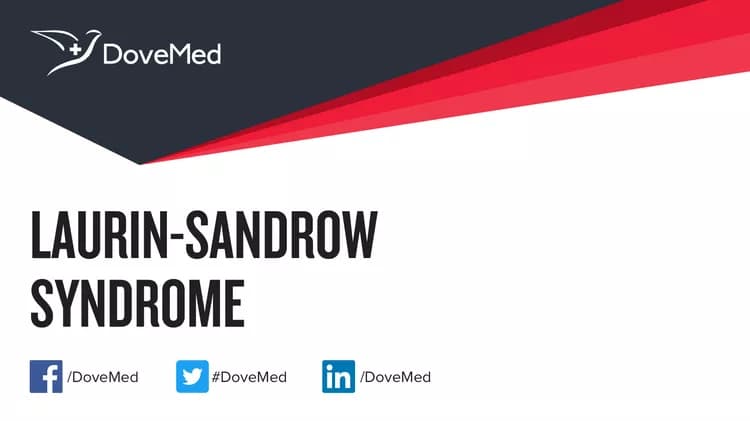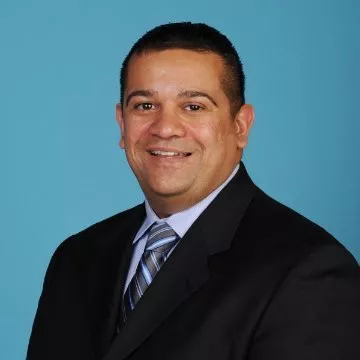What are the other Names for this Condition? (Also known as/Synonyms)
- Fibula Ulna Duplication Tibia Radius Absence
- LSS (Laurin-Sandrow Syndrome)
- Tetramelic Mirror-Image Polydactyly
What is Laurin-Sandrow Syndrome? (Definition/Background Information)
- Laurin-Sandrow Syndrome (LSS) is characterized by complete polysyndactyly of the hands, mirror feet and nose anomalies (hypoplasia of the nasal alae and short columella), often associated with ulnar and/or fibular duplication (and sometimes tibial agenesis)
- It has been described in less than 20 cases
- Some cases with the same clinical signs but without nasal defects have also been reported, and may represent the same entity
- The etiology of LSS is unknown. Different modes of inheritance have been suggested
(Source: Laurin-Sandrow Syndrome; Orphanet, National Institute of Health and Medical Research (INSERM), Paris.)
Who gets Laurin-Sandrow Syndrome? (Age and Sex Distribution)
- Laurin-Sandrow Syndrome is a rare, congenital disorder. The presentation of symptoms may occur at birth
- Both males and females may be affected
- Worldwide, individuals of all racial and ethnic groups may be affected
What are the Risk Factors for Laurin-Sandrow Syndrome? (Predisposing Factors)
- A positive family history may be an important risk factor, since Laurin-Sandrow Syndrome may be inherited
- Currently, no other risk factors have been clearly identified for LSS
It is important to note that having a risk factor does not mean that one will get the condition. A risk factor increases one’s chances of getting a condition compared to an individual without the risk factors. Some risk factors are more important than others.
Also, not having a risk factor does not mean that an individual will not get the condition. It is always important to discuss the effect of risk factors with your healthcare provider.
What are the Causes of Laurin-Sandrow Syndrome? (Etiology)
- The cause of Laurin-Sandrow Syndrome is not clearly understood
- Some research scientists believe that it may be an inherited genetic condition
What are the Signs and Symptoms of Laurin-Sandrow Syndrome?
The signs and symptoms of Laurin-Sandrow Syndrome may include:
- Abnormality of the face
- Broad foot
- Hand polydactyly
- Patella aplasia
- Short foot
- Syndactyly
Very frequently present symptoms in 80-99% of the cases:
- Abnormality of the metacarpal bones
- Aplasia/hypoplasia of the thumb
- Finger syndactyly
- Mirror image polydactyly
- Preaxial foot polydactyly
- Tarsal synostosis
- Toe syndactyly
- Triphalangeal thumb
Frequently present symptoms in 30-79% of the cases:
- Abnormality of the wrist
- Absent radius
- Absent tibia
- Depressed nasal bridge
- Fibular duplication
- Limb duplication
- LImitation of joint mobility
- Prominent nose
- Short columella
- Talipes
- Underdeveloped nasal alae
Occasionally present symptoms in 5-29% of the cases:
- Aplasia/hypoplasia of the corpus callosum
- Cryptorchidism
- Downturned corners of mouth
- Hydrocephalus
- Hypertelorism
- Intellectual disability
- Muscular hypotonia
(Source: Laurin-Sandrow Syndrome; Genetic and Rare Diseases Information Center (GARD) of National Center for Advancing Translational Sciences (NCATS), USA.)
How is Laurin-Sandrow Syndrome Diagnosed?
Laurin-Sandrow Syndrome is diagnosed on the basis of the following information:
- Complete physical examination
- Thorough medical history evaluation
- Assessment of signs and symptoms
- Laboratory tests
- Imaging studies
- Biopsy studies, if necessary
Many clinical conditions may have similar signs and symptoms. Your healthcare provider may perform additional tests to rule out other clinical conditions to arrive at a definitive diagnosis.
What are the possible Complications of Laurin-Sandrow Syndrome?
The complications of Laurin-Sandrow Syndrome may include:
- Abnormalities affecting the brain
- Facial deformity causing cosmetic concerns and severe emotional stress
Complications may occur with or without treatment, and in some cases, due to treatment also.
How is Laurin-Sandrow Syndrome Treated?
There is no cure for Laurin-Sandrow Syndrome. The treatment is usually given to manage the signs and symptoms and any complications that develops.
How can Laurin-Sandrow Syndrome be Prevented?
Currently, Laurin-Sandrow Syndrome may not be preventable, since it may be a genetic disorder.
- If there is a family history of the condition, then genetic counseling will help assess risks, before planning for a child
- Active research is currently being performed to explore the possibilities for treatment and prevention of inherited and acquired genetic disorders
Regular medical screening at periodic intervals with tests and physical examinations are recommended.
What is the Prognosis of Laurin-Sandrow Syndrome? (Outcomes/Resolutions)
- The prognosis of Laurin-Sandrow Syndrome is dependent upon the severity of the signs and symptoms and associated complications, if any
- Individuals with mild conditions have better prognosis than those with severe symptoms and complications
- Typically, the prognosis may be assessed on a case-by-case basis
Additional and Relevant Useful Information for Laurin-Sandrow Syndrome:
Laurin-Sandrow Syndrome is also known by the following names
- Mirror Hands and Feet with Nasal Defects
- Sandrow Syndrome
The following DoveMed website link is a useful resource for additional information:
Related Articles
Test Your Knowledge
Asked by users
Related Centers
Related Specialties
Related Physicians
Related Procedures
Related Resources
Join DoveHubs
and connect with fellow professionals


0 Comments
Please log in to post a comment.